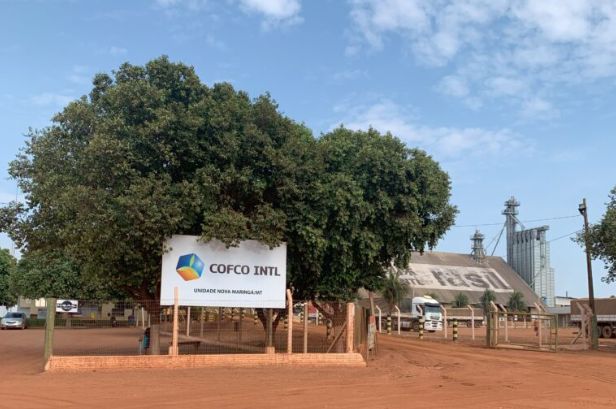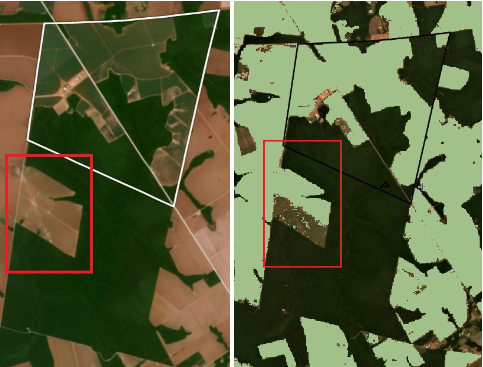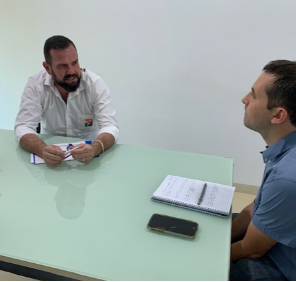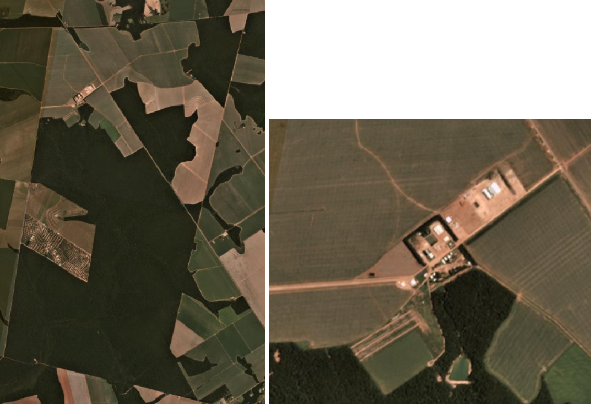The Rainforest Investigations Network (RIN) asked its 2022 Fellows about the innovative methodologies behind their impactful stories. Below is an abbreviated version of the full reporting guide published on the Pulitzer Center website. [Link to be provided later]
A 2021 report by the WWF found that China’s imports accounted for a bigger share of tropical deforestation caused by international trade than the U.S. and Europe combined. This investigation explored how such massive amounts of forest-risk commodities were entering China.
We focused on the China Oil and Foodstuffs Corporation, which goes by the name Cofco. This state-run company has annual revenues of more than US$110 billion, and its commodity trading wing, Cofco International, imports huge volumes of soybeans, palm oil and other products from Brazil, Indonesia and other rainforest nations.
Our hypothesis was that despite its public promises, Cofco’s supply chains were still contaminated with deforestation. We suspected that Cofco was not doing enough due diligence on its suppliers to screen out farms that had cut down rainforests, and that it was not adequately enforcing the strict supply chain policies it had committed to on paper.

Connecting the company to deforestation
We found the first signs that Cofco’s supply chains were contaminated by deforestation from publicly available documents and reports by environmental groups. We wanted to take a deeper look at Cofco’s exposure to deforestation in its Brazilian soy supply chains.
To do this, we scraped publicly available documents that showed us a sample of the sales by soy producers to Nutrade Comercial Exportadora, an intermediary company that delivered grains to Cofco International and other traders in Brazil. Cofco does not disclose its soy suppliers but these documents made it possible to identify its indirect suppliers - the producers that did not have a direct relationship with Cofco, but instead they sold the product to local traders who in turn sold them to Cofco.
Once we had the list of Cofco’s indirect suppliers from scraping these sales documents, we started investigating the environmental crimes related to these producers. We did this by looking up the suppliers in public databases, such as the list of embargoes imposed by the federal environmental agency IBAMA, and embargoes imposed at a state level by the State Environmental Agency of Mato Grosso (SEMA). We also researched the names of these indirect suppliers on land information databases, such as Sigef, the land register data system of Incra, Brazil's land agency and CAR, the Rural Environmental Register of properties in Brazil.
Our analysis of Cofco and 86 of its soy suppliers in Mato Grosso found that 15 suppliers had been fined or embargoed for recent violations. At least five, and as many as 11 of those 15 suppliers were under an active embargo during the time Cofco did business with them. It was important to check whether the embargo was active at the time the soybeans were purchased.
Another important tool we used was Global Forest Watch’s “soy-planted area” feature. This allowed us to see whether soy was being cultivated within areas that had been deforested. In one of our key cases involving the landowner Joao Luiz Lazarotto, this feature provided us with strong indications that he had not only cleared forests (red polygon) but also that he had converted that land into soy plantations (olive green in right image).

We reviewed Cofco’s supply chain policies and found the cases we had identified appeared to violate various commitments by the company, including its Code of Conduct, Supplier Code of Conduct, Sustainable Soy Sourcing Policy and Sustainable Palm Oil Sourcing Policy.
Reporting in the field
To confirm our analysis and report on conditions on the ground, we visited three farms in Mato Grosso that we had identified as Cofco suppliers involved in deforestation and requested interviews with the landowners.
One of our key interviews was with Lazarotto, a prosperous landowner who, satellite images showed, had cleared 650 hectares of forests on his property in 2017. Lazarotto had legal permission to clear this land, but his actions violated the conditions of the Soy Moratorium, an agreement among leading soy traders not to buy soybeans grown on recently deforested land in the Amazon. Cofco is a signatory to the Soy Moratorium.
When we spoke to Lazarotto, he openly admitted to clearing the land in question. He complained that his biggest buyer, Grupo Amaggi, refused to buy the soybeans grown on the recently deforested tract of his property because of the moratorium. But Cofco, his second largest buyer, was still doing business as usual and had not asked him to remove the soybeans grown on deforested land.

Responding to denials
To our surprise, Cofco responded to our initial inquiry by claiming that it had never bought soybeans from any of the three farms in question. When we sent receipts showing its purchases, Cofco shifted its position. It said it had bought from those landowners, but that its purchases came from sections of their property that were registered separately from the deforested zones. It said these sections were in fact different farms, and that therefore it had not purchased soybeans grown on deforested land.
Experts told us that its claims didn’t make sense if the farms in question were still a single operation. Dividing the land into different registrations, they said, was a strategy for gaming the system. It allowed landowners who cut down forests to sell products by marking down their sales as coming from a “clean” section of the farm.
But we still needed to show evidence that these farms were a single operation. We used satellite images from Planet Explorer (special access through the NICFI program) to visually demonstrate that the properties were really one farm because of the lack of borders between the differently registered sections.
Another key piece of evidence was grain silos. We found the only grain silos on the property were in the “clean” section of the farm – meaning that the grains were likely mixed together and all marked as originating from the compliant zone.

This article was originally published by the Pulitzer Center and is published here with permission.
Photo by roya ann miller on Unsplash.

